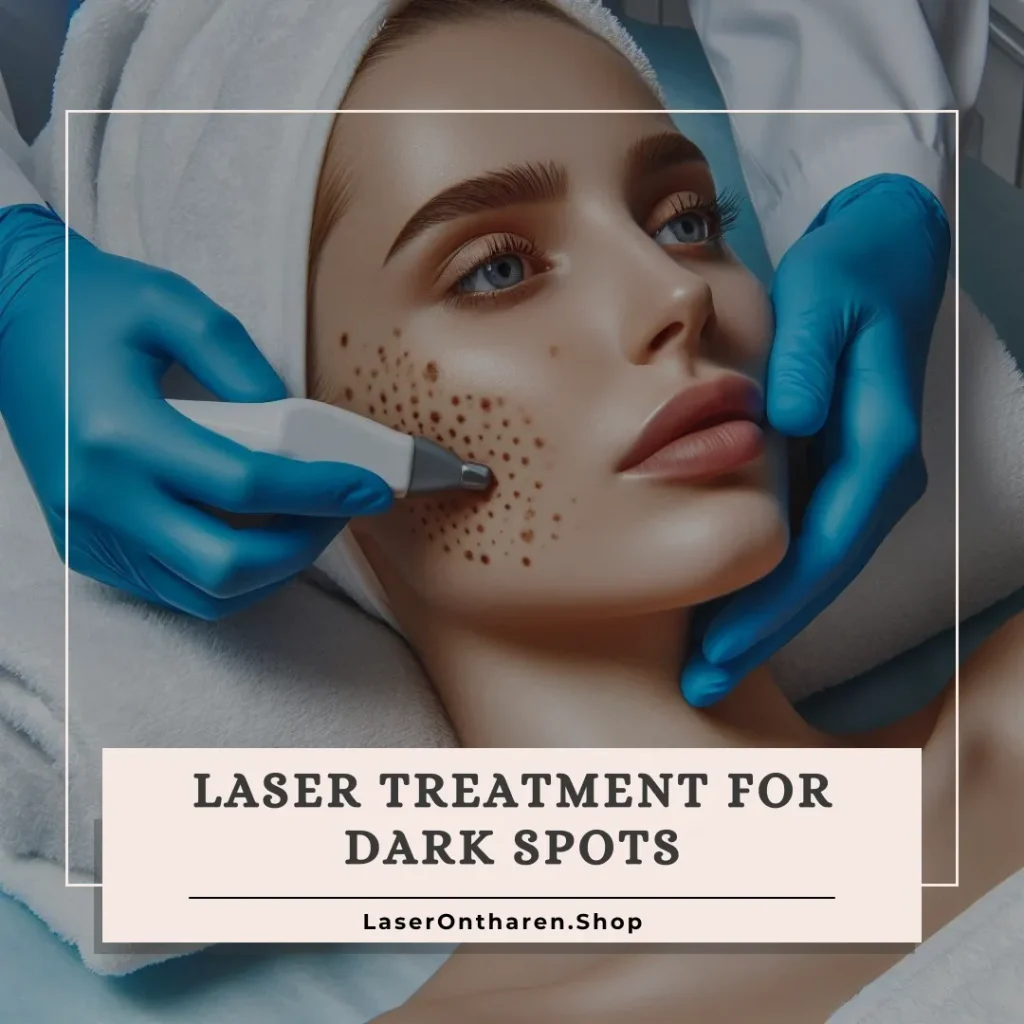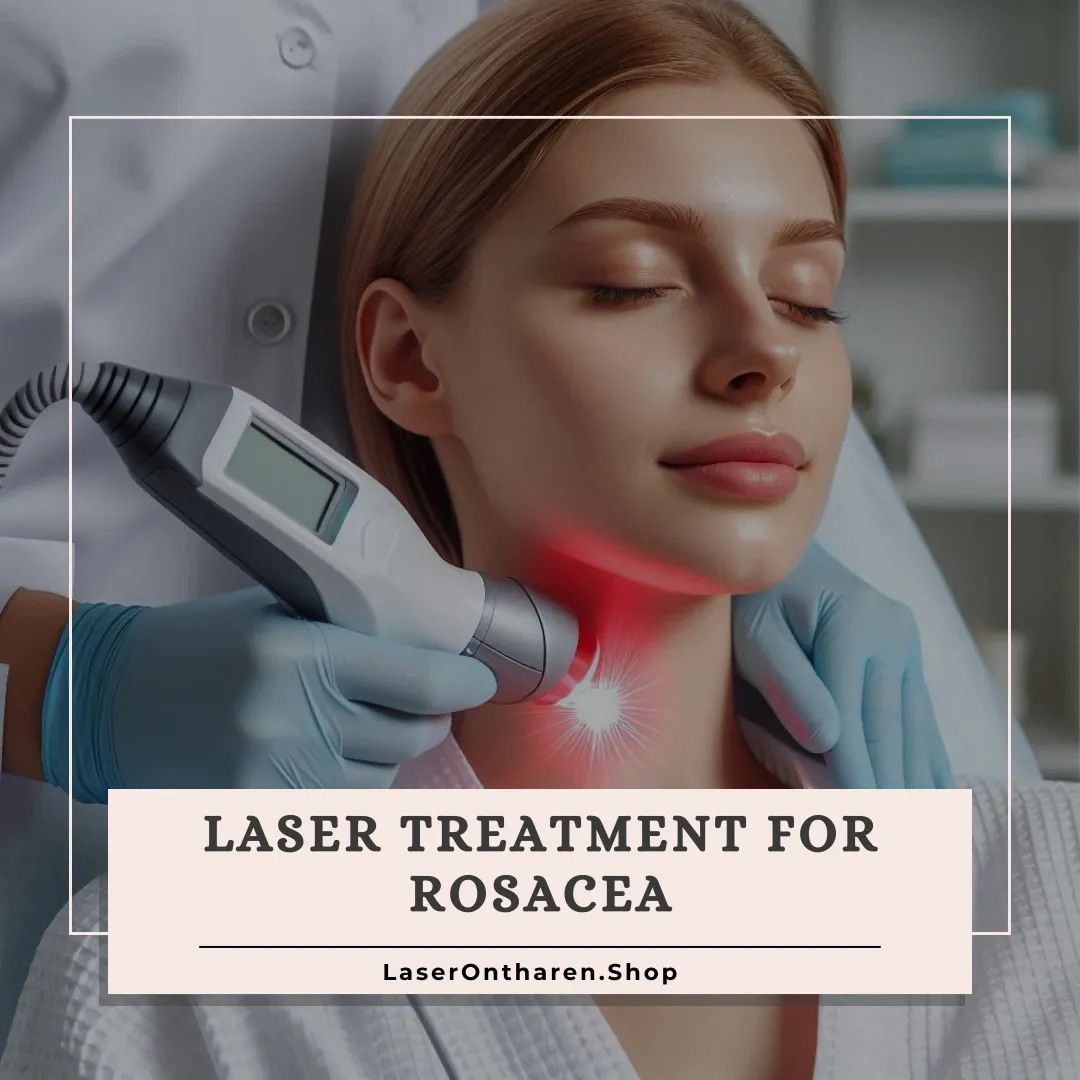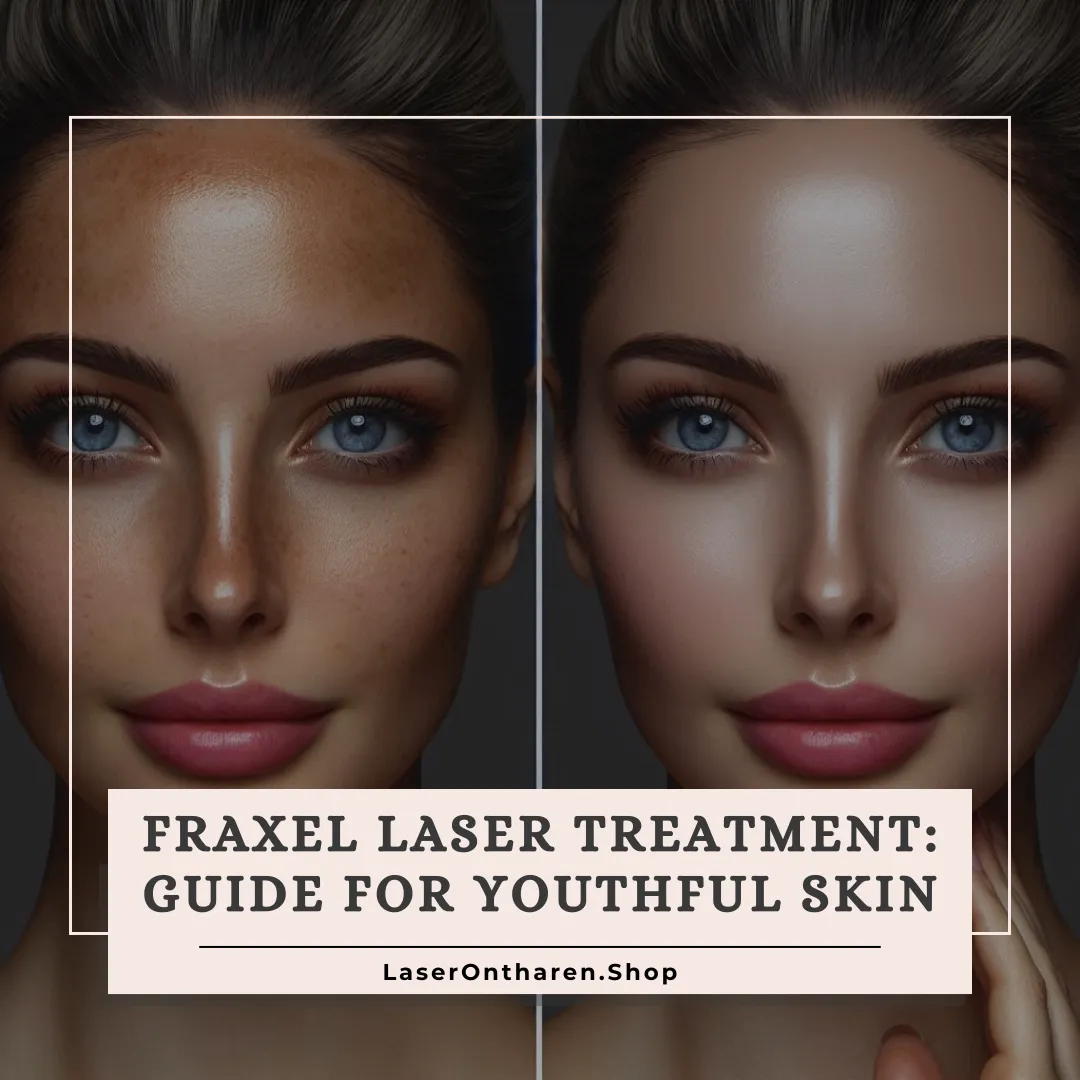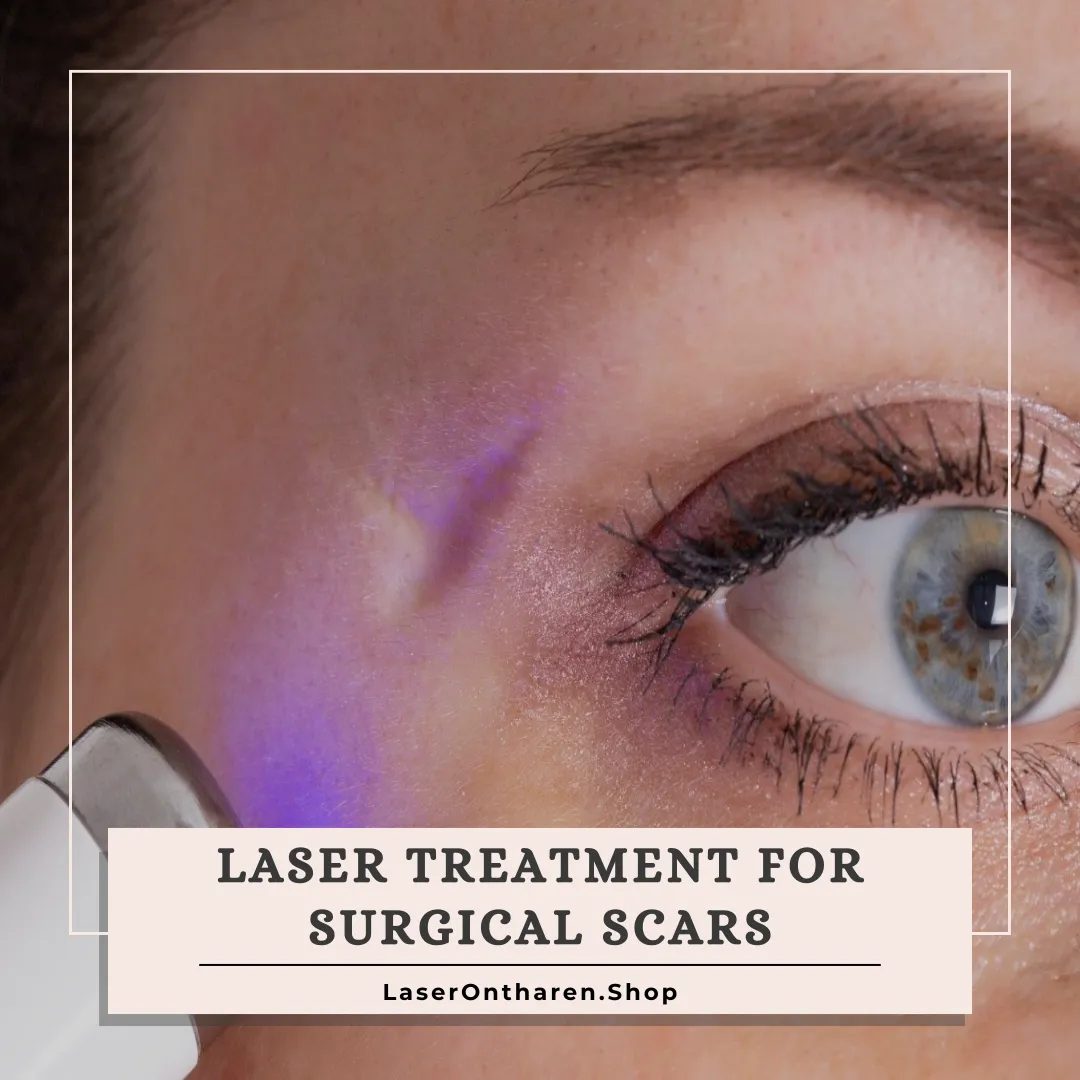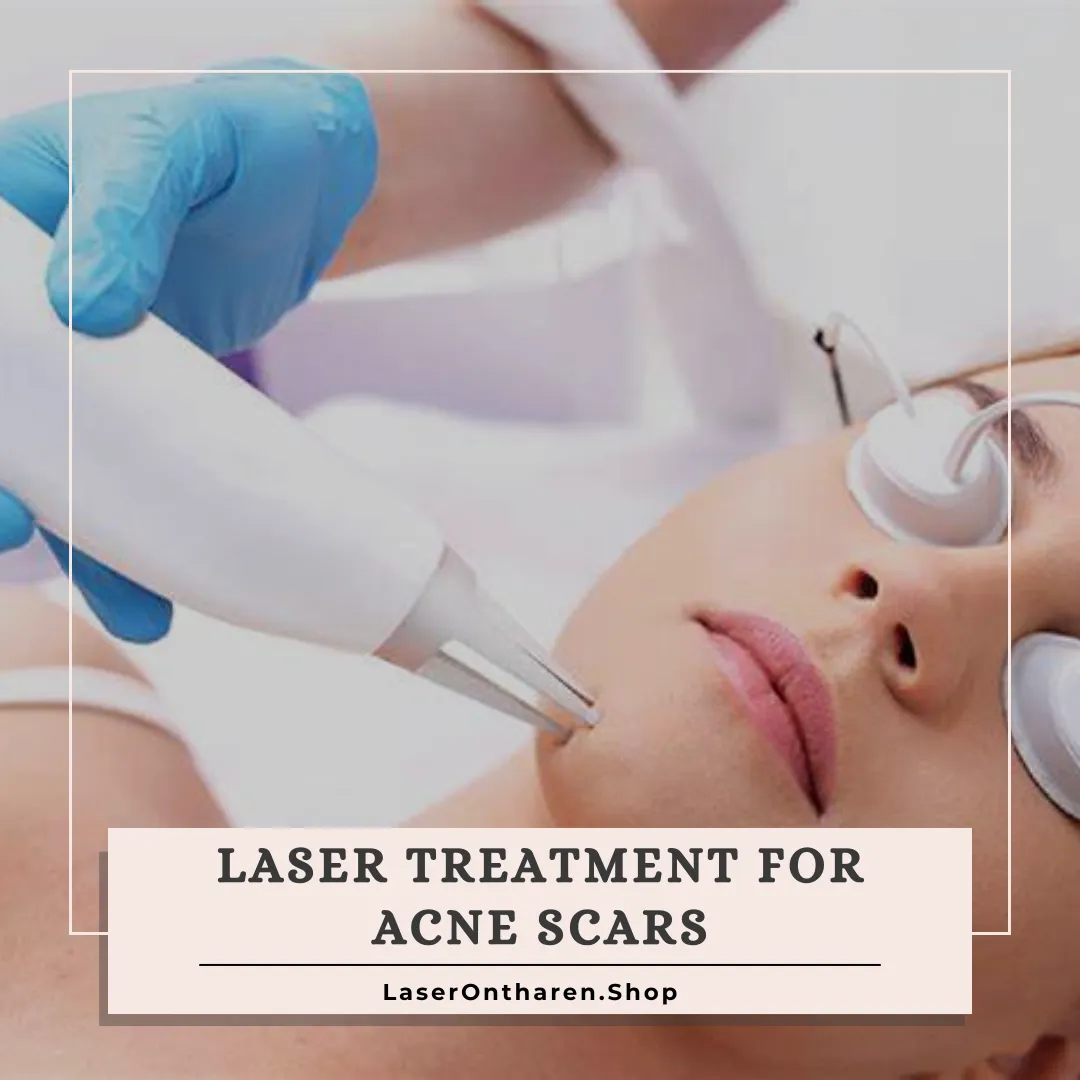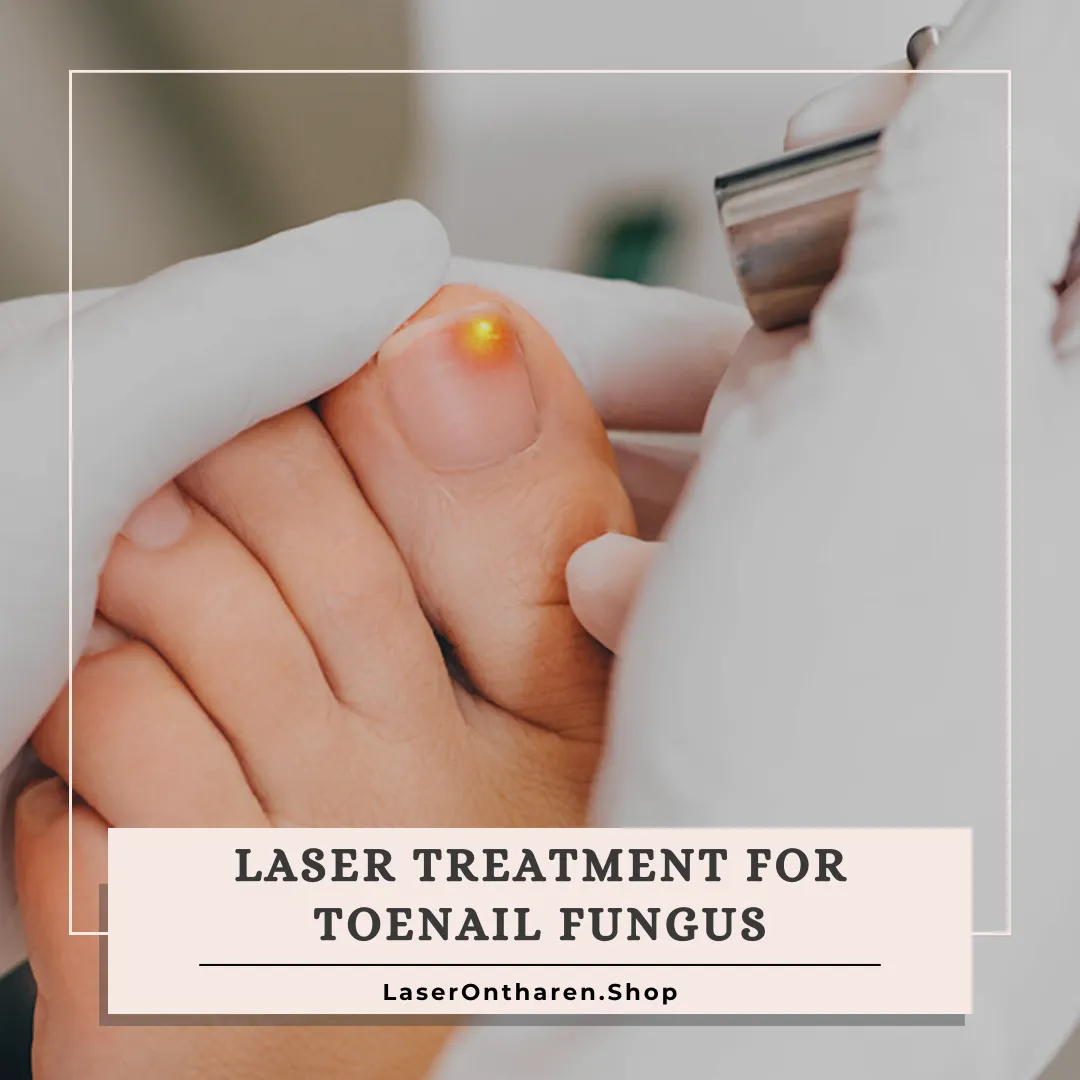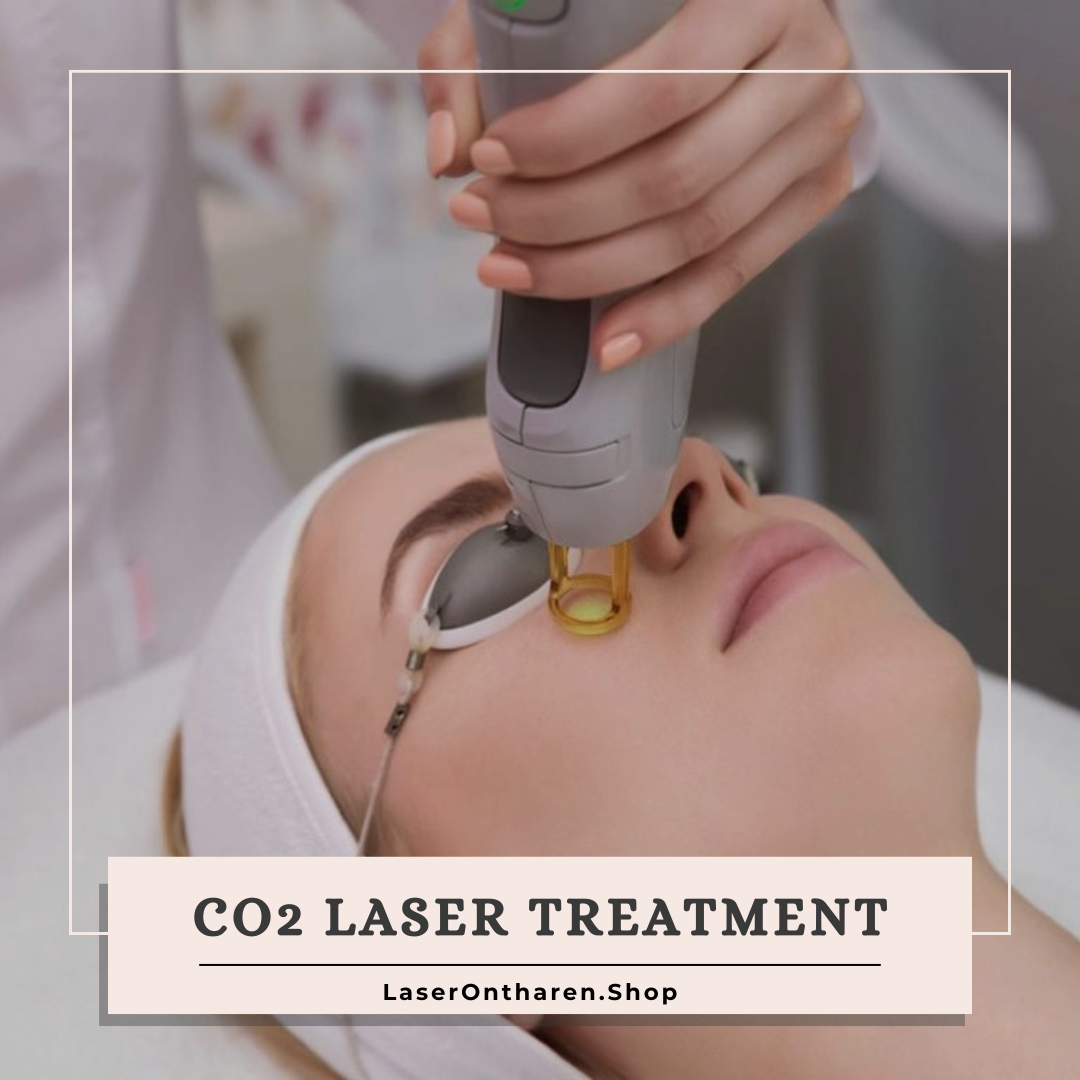If you’re struggling with dark spots and seeking an effective solution, you’re not alone.
We understand how challenging it can be to find a treatment that truly works.
In this comprehensive guide,
we’ll explore everything you need to know about laser treatment for dark spots, from costs and benefits to procedures and recovery.
By the end of this article, you’ll have all the information you need to make an informed decision and achieve clearer, more radiant skin.
- Warning
Before undergoing any laser treatment, it’s essential to consult with a qualified dermatologist or cosmetic surgeon who can assess your specific concerns and recommend the most appropriate treatment for your skin type and condition.
They can also provide information about the potential risks, benefits, and expected outcomes of the procedure.
Laser Treatment for Dark Spots
Dark spots, also known as hyperpigmentation, are a common skin concern caused by factors like sun exposure, aging, hormonal changes, and acne scars.
These spots can vary in size and color, often making the skin look uneven and affecting one’s self-confidence.
Laser treatment has become a popular and effective solution for reducing the appearance of dark spots and achieving a more uniform skin tone.
How Laser Treatment Works
Laser treatment for dark spots utilizes focused light energy to target the melanin (pigment) within the dark spots.
The laser’s energy is absorbed by the melanin, breaking it down into smaller particles.
Over time, the body’s natural processes remove these particles, resulting in a lighter appearance of the treated area.
Different types of lasers are used based on the depth and severity of the pigmentation.
Types of Lasers Used for Dark Spots
- Picofocus – Pico Laser: This advanced laser uses ultra-short pulses to shatter the pigment particles in the skin without causing significant damage to the surrounding tissue.
It is particularly effective for stubborn pigmentation and provides faster recovery times. - ND-Yag Laser: Known for its versatility, the ND-Yag laser can penetrate deeper into the skin to target pigment located in the lower layers.
It is suitable for a variety of skin types and is effective for treating dark spots, melasma, and other pigmentation issues. - Co2 Fractional Laser: This laser creates micro-injuries in the skin, promoting collagen production and skin renewal.
It is ideal for more extensive pigmentation issues and can also improve skin texture and tone.
Benefits of Laser Treatment for Dark Spots
- Precision: Lasers can specifically target dark spots without affecting the surrounding skin, allowing for precise treatment.
- Minimal Downtime: Most laser treatments involve minimal downtime, enabling patients to return to their daily activities quickly.
- Effective Results: Multiple sessions often lead to significant improvement in the appearance of dark spots.
- Customization: Treatments can be tailored to individual skin types and pigmentation concerns, providing a personalized approach.
What to Expect During Treatment
During a laser treatment session, a specialist will clean the skin and may apply a numbing cream to minimize discomfort.
The laser device is then directed at the dark spots, delivering pulses of light energy.
Patients may feel a slight snapping sensation as the laser works.
Each session typically lasts between 15 to 30 minutes, depending on the size of the treatment area.
Ideal Candidates for Laser Treatment
Laser treatment is suitable for most people experiencing dark spots, but the best candidates are those who:
- Have realistic expectations about the outcome
- Are in good overall health
- Do not have active skin infections or conditions in the treatment area
- Are willing to follow pre- and post-treatment care instructions
- +31623800046
- info@laserontharen.shop
Cost of Laser Treatment for Dark Spots
The cost of laser treatment for dark spots can vary significantly based on the type of laser used, the geographic location, the extent of the treatment area, and the number of sessions required.
Here, we’ll explore the typical costs you can expect for laser treatments in Europe, providing a comprehensive understanding to help you budget for this effective skin treatment.
Factors Influencing the Cost
- Type of Laser Used: Different lasers come with different price tags. Ablative lasers, which remove layers of skin, tend to be more expensive than non-ablative lasers that work by heating the underlying skin tissue without damaging the surface.
- Size of the Treatment Area: Larger areas of treatment naturally cost more than smaller, localized treatments.
- Number of Sessions: More severe pigmentation issues might require multiple sessions, increasing the overall cost.
- Geographic Location: Prices can vary depending on the country and city, with treatments generally being more expensive in larger urban areas.
- Provider Experience: Highly experienced dermatologists and reputable clinics might charge more for their services.
Average Costs in Europe
Based on current data, here are the average costs for laser treatment of dark spots across Europe:
- United Kingdom: Prices range from £150 to £900 per session depending on the type of laser and the extent of the treatment area (Derm Collective) (WhatClinic).
- Germany: Costs typically range from €200 to €1,000 per session, with some high-end clinics charging up to €2,000 for extensive treatments (Derm Collective).
- France: Treatments can range from €300 to €1,200 per session, influenced by the type of laser and the specific clinic.
- Italy: Prices are generally between €250 and €900 per session, depending on the laser technology and the clinic’s reputation (Qazi Cosmetic Center).
- Spain: Costs range from €200 to €800 per session, with larger cities like Madrid and Barcelona on the higher end of the spectrum.
Cost Breakdown by Laser Type
- Picofocus – Pico Laser: Typically more expensive due to its advanced technology, ranging from €500 to €1,500 per session.
- ND-Yag Laser: Known for versatility and effectiveness, costs around €300 to €1,000 per session.
- Co2 Fractional Laser: One of the pricier options due to its efficacy for deeper pigmentation issues, usually ranging from €600 to €2,000 per session.
Additional Costs
When considering laser treatment, also factor in potential additional costs such as:
- Consultation Fees: Initial consultations can range from €50 to €150.
- Aftercare Products: Post-treatment care may require special creams or sunscreens, adding €50 to €200 to the total cost.
- Multiple Sessions: Severe cases of hyperpigmentation may require several sessions, which can multiply the total cost significantly.
- +31623800046
- info@laserontharen.shop
Pros and Cons of Laser Treatment for Dark Spots
Laser treatment for dark spots has become a popular choice for individuals seeking to improve their skin tone and achieve a more even complexion.
Like any medical procedure, it has its advantages and disadvantages.
Understanding these can help you make an informed decision about whether this treatment is right for you.
Pros of Laser Treatment for Dark Spots
- High Precision
- Targeted Treatment: Lasers can specifically target dark spots without affecting the surrounding skin, making the treatment highly precise and efficient.
- Adjustable Intensity: The intensity of the laser can be adjusted based on the depth and severity of the pigmentation, ensuring optimal results.
- Effective Results
- Visible Improvement: Many patients see significant improvements in the appearance of their dark spots after a few sessions.
- Long-Lasting Effects: When combined with proper skin care, the results of laser treatments can be long-lasting.
- Minimal Downtime
- Quick Recovery: Most laser treatments involve minimal downtime, allowing patients to resume their daily activities shortly after the procedure.
- Less Invasive: Compared to surgical options, laser treatments are less invasive and generally more comfortable.
- Versatility
- Suitable for Various Skin Types: Modern lasers are designed to treat a wide range of skin types and tones, making them accessible to more patients.
- Multiple Applications: Lasers can address various pigmentation issues, including sun spots, age spots, melasma, and post-inflammatory hyperpigmentation.
Cons of Laser Treatment for Dark Spots
- Cost
- High Expense: Laser treatments can be expensive, especially if multiple sessions are required. The cost can range from €200 to €1,500 per session, depending on the type of laser and the extent of the treatment.
- Additional Costs: There may be extra costs for consultation, aftercare products, and follow-up sessions.
- Possible Side Effects
- Temporary Discomfort: Patients may experience redness, swelling, and a mild burning sensation immediately after the treatment.
- Pigment Changes: In some cases, laser treatment can cause hyperpigmentation (darkening) or hypopigmentation (lightening) of the skin, especially in individuals with darker skin tones.
- Multiple Sessions Required
- Gradual Results: Significant improvement often requires multiple treatment sessions, which can be time-consuming and costly.
- Not Suitable for All Skin Conditions
- Limitations: Laser treatment may not be effective for all types of pigmentation. For example, deep or extensive pigmentation might require alternative or additional treatments.
- Risk of Scarring and Burns
- Skin Damage: Improper use of laser equipment or inadequate post-treatment care can lead to scarring, burns, or other skin damage.
- +31623800046
- info@laserontharen.shop
Risks and Side Effects of Laser Treatment for Dark Spots
While laser treatment for dark spots can offer significant improvements in skin tone and texture, it is important to be aware of the potential risks and side effects.
Understanding these can help you make an informed decision and prepare adequately for the treatment process.
Common Side Effects
- Redness and Swelling
- Immediate Reaction: Post-treatment, it is common to experience redness and swelling in the treated area.
This is a normal inflammatory response and usually subsides within a few hours to a few days. - Management: Applying cold compresses and keeping the treated area elevated can help reduce these symptoms.
- Immediate Reaction: Post-treatment, it is common to experience redness and swelling in the treated area.
- Discomfort and Pain
- Sensation: Patients might feel a burning or stinging sensation during and after the procedure.
This discomfort is generally mild and temporary. - Pain Relief: Over-the-counter pain relievers and topical anesthetics prescribed by your dermatologist can alleviate discomfort.
- Sensation: Patients might feel a burning or stinging sensation during and after the procedure.
- Skin Peeling and Crusting
- Exfoliation: As the skin heals, you might notice peeling or crusting in the treated area.
This is part of the natural healing process as new skin cells replace the old ones. - Aftercare: Keeping the skin moisturized and avoiding picking at the peeling skin is crucial to prevent infection and scarring.
- Exfoliation: As the skin heals, you might notice peeling or crusting in the treated area.
Potential Risks
- Hyperpigmentation and Hypopigmentation
- Pigment Changes: One of the more concerning side effects is changes in skin pigmentation.
Hyperpigmentation (darkening of the skin) or hypopigmentation (lightening of the skin) can occur, particularly in individuals with darker skin tones. - Prevention: Using the appropriate type of laser for your skin type and following post-treatment care can help minimize these risks.
- Pigment Changes: One of the more concerning side effects is changes in skin pigmentation.
- Scarring and Burns
- Skin Damage: Improper use of the laser or failure to follow post-treatment care instructions can lead to burns, blisters, or scarring.
This is more likely with ablative lasers that remove layers of skin. - Mitigation: Ensuring treatment is performed by a qualified and experienced dermatologist significantly reduces these risks.
- Skin Damage: Improper use of the laser or failure to follow post-treatment care instructions can lead to burns, blisters, or scarring.
- Infection
- Bacterial Invasion: The skin’s barrier is temporarily compromised after laser treatment, making it susceptible to bacterial infections.
- Preventive Measures: Keeping the treated area clean and following your dermatologist’s advice on aftercare can prevent infections.
Antibiotic ointments might also be recommended.
Less Common Side Effects
- Acne Flare-Ups
- Breakouts: Some patients may experience acne breakouts following laser treatment, especially if oily ointments are used as part of aftercare.
- Management: Using non-comedogenic (non-pore-clogging) products can help manage this issue.
- Changes in Skin Texture
- Uneven Skin: In some cases, laser treatment can lead to changes in skin texture, resulting in a bumpy or uneven surface.
- Correction: Additional treatments or topical therapies may be needed to address these changes.
Precautions and Preventive Measures
- Choosing the Right Professional
- Qualified Dermatologist: Selecting a board-certified dermatologist with experience in laser treatments is crucial for minimizing risks and achieving the best outcomes.
- Following Pre-Treatment Guidelines
- Skin Preparation: Adhering to pre-treatment guidelines, such as avoiding sun exposure and certain medications, can help reduce the risk of complications.
- Adhering to Post-Treatment Care
- Aftercare Instructions: Proper aftercare is essential for healing and minimizing side effects.
This includes using prescribed ointments, avoiding sun exposure, and not picking at the treated skin.
- Aftercare Instructions: Proper aftercare is essential for healing and minimizing side effects.
- +31623800046
- info@laserontharen.shop
Preparation Before Laser Treatment for Dark Spots
Proper preparation is essential for ensuring the safety and effectiveness of laser treatment for dark spots.
By following these guidelines, patients can minimize risks and enhance their treatment outcomes.
Consultation with a Dermatologist
- Initial Assessment
Medical History: Discuss your medical history, including any skin conditions, medications, and previous treatments, with your dermatologist.
This helps identify any potential risks or contraindications.
Skin Type Evaluation: The dermatologist will assess your skin type and the nature of your dark spots to determine the most suitable laser treatment.
- Patch Test
Test Treatment Area: A small area of skin may be treated with the laser to observe how it reacts.
This helps ensure that the laser settings are appropriate for your skin type and reduces the risk of adverse reactions.
Pre-Treatment Guidelines
- Avoid Sun Exposure
- Protection: Minimize sun exposure and use a broad-spectrum sunscreen with an SPF of 30 or higher to protect your skin from UV rays. Sunburned or tanned skin can increase the risk of side effects.
- Stop Certain Medications
- Medications to Avoid: Discontinue the use of medications that can increase photosensitivity or affect blood clotting, such as retinoids, antibiotics, and blood thinners, as advised by your dermatologist.
- Skin Care Routine
- Gentle Products: Use gentle skin care products and avoid exfoliants, acids, and other harsh treatments that can irritate the skin. Keeping the skin hydrated and healthy can enhance the laser treatment’s effectiveness.
- Hydration
- Stay Hydrated: Drink plenty of water in the days leading up to your treatment to keep your skin well-hydrated. This can aid in the healing process post-treatment.
Laser Treatment Procedure for Dark Spots
Understanding the laser treatment procedure can help ease any anxieties and ensure you are well-prepared for your appointment. Here’s a step-by-step overview of what to expect during the treatment.
During the Treatment
- Preparation
- Cleaning the Skin: The treatment area will be thoroughly cleaned to remove any makeup, oils, or impurities. This ensures the laser can penetrate the skin effectively.
- Numbing Cream: A topical anesthetic may be applied to the skin to minimize discomfort during the procedure. This cream usually takes 30 to 45 minutes to take effect.
- Laser Application
- Protective Gear: You will be given protective eyewear to shield your eyes from the laser light. The dermatologist or technician will also wear protective gear.
- Laser Settings: The laser device settings will be adjusted based on your skin type and the severity of the dark spots. The dermatologist will direct the laser to the targeted areas, delivering short pulses of light to break down the pigment.
- Cooling Devices: Some lasers come with built-in cooling devices to protect the skin and enhance comfort during the treatment. Alternatively, an external cooling device may be used.
- Treatment Duration
- Session Length: The duration of the treatment session can vary from 15 to 30 minutes, depending on the size and number of dark spots being treated.
After the Treatment
- Immediate Aftercare
- Soothing Cream: A soothing cream or gel may be applied to the treated area to reduce redness and swelling. Ice packs can also be used to alleviate discomfort.
- Post-Treatment Instructions: You will receive detailed aftercare instructions to follow at home. This includes avoiding sun exposure, using prescribed ointments, and keeping the skin moisturized.
- Follow-Up Appointments
- Monitoring Progress: Schedule follow-up appointments as recommended by your dermatologist to monitor the healing process and assess the effectiveness of the treatment. Multiple sessions may be required for optimal results.
- +31623800046
- info@laserontharen.shop
Recovery and Aftercare for Laser Treatment for Dark Spots
Proper recovery and aftercare are crucial for achieving the best results from laser treatment for dark spots.
Following these guidelines can help minimize side effects, promote healing, and enhance the treatment’s effectiveness.
Immediate Post-Treatment Care
After your laser treatment, your dermatologist may apply a cooling gel or a soothing cream to reduce redness and swelling.
You might also use ice packs intermittently to alleviate discomfort. Protecting your skin from the sun is vital, as the treated skin will be particularly sensitive to UV rays.
Use a broad-spectrum sunscreen with at least SPF 30, and wear protective clothing when outdoors.
Reapply sunscreen every two hours if you are outside, especially after sweating or swimming.
Daily Care Routine
Use a gentle, non-irritating cleanser to clean the treated area.
Avoid scrubbing or using harsh exfoliants that could irritate the skin.
After washing, pat the skin dry with a soft towel. Keeping the skin well-hydrated is crucial. Use a fragrance-free, hypoallergenic moisturizer to maintain skin hydration and aid the healing process.
Monitoring Side Effects
Redness and swelling are common side effects and usually subside within a few days.
Continue using cold compresses and recommended soothing creams to reduce these symptoms.
If redness or swelling persists or worsens, contact your dermatologist. As the skin heals, you might notice peeling or crusting.
Do not pick at the peeling skin to avoid scarring or infection.
Using an emollient can help soften and soothe the skin during this phase.
Long-Term Aftercare
Attend all scheduled follow-up appointments to monitor the healing process and assess the effectiveness of the treatment.
Your dermatologist may adjust your aftercare routine based on your progress.
Depending on the severity of your dark spots and the type of laser used, you may need additional treatment sessions.
Continue using sunscreen daily to protect your skin from further damage and to prevent new dark spots from forming.
Incorporate skin care products recommended by your dermatologist, such as those containing vitamin C, retinoids, or other brightening agents, to maintain the results and keep your skin healthy
- +31623800046
- info@laserontharen.shop
Laser Treatment for Dark Spots Near Me
If you’re considering laser treatment for dark spots, finding a reputable clinic is crucial to ensure effective and safe results.
Here are details about two prominent clinics in the Netherlands that offer advanced laser treatments for pigmentation issues.
Laser Treatment for Dark Spots in Netherlands
1. Derma2Care – Amsterdam
- Location: Rustenburgerstraat 380, 1072 HG, Amsterdam, Netherlands
- Contact: +31 20 470 2595
- Website: derma2care.nl
- Services: Derma2Care provides comprehensive laser treatments for pigmentation, including dark spots, using the latest technologies.
The clinic is known for its personalized treatment plans tailored to individual skin types and conditions.
They offer a variety of services such as laser hair removal, vein treatments, acne treatments, and microdermabrasion.
The clinic focuses on providing high-quality care and achieving the best possible results for their patients.
2. Polikliniek De Blaak – Rotterdam
- Location: Blaak 243/285, 3011 GB, Rotterdam, Netherlands
- Contact: +31 10 412 7142
- Website: polikliniekdeblaak.nl
- Services: Polikliniek De Blaak offers advanced laser treatments for dark spots and other pigmentation issues.
They utilize fractional CO2 laser technology, which is effective in treating a variety of skin conditions including pigmentation, wrinkles, and scars.
The clinic is equipped with state-of-the-art technology and staffed by experienced dermatologists and medical professionals who provide detailed consultations and personalized treatment plans.
Laser Treatment for Dark Spots in Germany
1. Haut und Laser Zentrum an der Oper
- Location: Perusastraße 5, 80333 Munich, Germany
- Contact: +49 89 2421870
- Website: haut-und-laser-zentrum.de
- Services: This clinic specializes in various dermatological treatments, including advanced laser therapies for pigmentation issues such as dark spots. They use state-of-the-art fractional CO2 lasers, which are effective for treating pigmentation, wrinkles, and scars. The clinic is known for its high-quality care and personalized treatment plans to ensure optimal results for each patient.
2. Aerzte – Und Laserzentrum Frankfurt
- Location: Rossmarkt 15, 60311 Frankfurt, Germany
- Contact: +49 69 29924650
- Website: laserzentrum-frankfurt.de
- Services: This clinic offers comprehensive laser treatments for skin conditions, including dark spots and hyperpigmentation. They utilize the Mosaic Fractional Laser and Candela CO2RE Fractional Laser, which are highly effective for skin resurfacing and pigmentation removal. The clinic provides detailed consultations to develop tailored treatment plans, ensuring the best possible outcomes for their patients.
Laser Treatment for Dark Spots in United Kingdom
1. Dr. Leah Clinics
- Location: 24 Chiswell St, London EC1Y 4TY, United Kingdom
- Contact: +44 20 7877 5999
- Website: drleah.co.uk
- Services: Dr. Leah Clinics are renowned for their expertise in aesthetic treatments, including laser pigmentation removal. They use advanced Harmony laser technology to treat hyperpigmentation, sun damage, freckles, and dark spots on the face, neck, chest, and hands. The clinic offers personalized treatment plans and detailed consultations to ensure the best possible results for each patient.
2. Cosmedics Skin Clinics
- Location: 41 Harley Street, London W1G 8QH, United Kingdom
- Contact: +44 20 7386 0464
- Website: cosmedics.co.uk
- Services: Cosmedics Skin Clinics specialize in laser treatments for facial pigmentation and sun damage using the advanced Harmony XL Pro laser. The clinic provides a range of services, including anti-aging injections and skin lesion surgery, under the guidance of Dr. Ross Perry and his team of specialists. They are known for their excellent patient care and tailored treatment approaches.
- +31623800046
- info@laserontharen.shop
Well-known Brands for Laser Treatment for Dark Spots
Several well-known brands offer advanced laser devices specifically designed for treating dark spots and pigmentation issues. These brands are trusted by dermatologists and aesthetic clinics worldwide for their efficacy and safety.
- Cynosure: Known for their advanced technology, Cynosure’s PicoSure laser is highly effective for pigmentation removal, including dark spots, age spots, and freckles. The device uses picosecond laser pulses to target and break down pigment particles in the skin.
- Candela: Candela’s GentleMax Pro combines two laser technologies (Alexandrite and Nd) to effectively treat pigmentation issues across various skin types. It’s renowned for its versatility and precision.
- Lumenis: The Lumenis M22 platform is a modular multi-application system that can treat over 30 skin conditions, including pigmentation. It uses IPL (Intense Pulsed Light) and Nd lasers to address dark spots and improve skin tone.
- Fotona: Fotona’s StarWalker MaQX and SP Dynamis systems are designed for a range of aesthetic treatments, including pigmentation removal. They offer advanced laser technology for precise and effective treatment of dark spots.
Best Laser Treatment for Dark Spots
When considering the best laser treatment for dark spots, it’s important to look at factors such as efficacy, safety, and the specific technology used. Here are some top options:
- PicoSure Laser: This picosecond laser is one of the most effective treatments for dark spots. It uses ultra-short pulses to shatter pigment particles without damaging the surrounding tissue, resulting in minimal downtime and effective results.
- Fraxel Dual Laser: Known for its ability to treat both superficial and deeper skin layers, the Fraxel Dual Laser is effective for addressing pigmentation issues and promoting overall skin rejuvenation. It’s particularly beneficial for sun damage and age spots.
- Q-Switched Nd Laser: This laser is versatile and effective for treating a variety of pigmentation issues, including dark spots, melasma, and post-inflammatory hyperpigmentation. It penetrates deeply into the skin, breaking down pigment particles for natural removal by the body.
- CO2 Laser: The CO2 fractional laser is highly effective for more severe pigmentation issues. It removes layers of skin, promoting the growth of new, healthy skin cells and improving overall skin tone and texture.
- +31623800046
- info@laserontharen.shop
Why Laser Treatment for Dark Spots is the Best?
Laser treatment for dark spots is considered one of the best options due to its precision, effectiveness, and versatility. Here are some reasons why:
- Precision: Lasers can target specific areas of pigmentation without affecting the surrounding skin, ensuring precise treatment and minimizing damage.
- Effectiveness: Laser treatments can provide significant improvements in the appearance of dark spots, often in fewer sessions compared to other treatments.
- Minimal Downtime: Many laser treatments involve minimal downtime, allowing patients to quickly return to their daily activities.
- Long-lasting Results: With proper care and maintenance, the results of laser treatments can be long-lasting, providing clearer and more even-toned skin.
Real Testimonials for Laser Treatment for Dark Spots
Dr. Leah Clinics
- Testimonial: “I had a series of laser treatments for my dark spots at Dr. Leah Clinics, and the results were amazing! My skin is so much clearer now, and the dark spots have significantly faded. The staff were professional and made me feel comfortable throughout the process.” – Sarah M.
Cosmedics Skin Clinics
- Testimonial: “Cosmedics Skin Clinics provided excellent care during my laser treatment for sun damage. The procedure was quick, and I noticed a big difference in my skin tone after just a few sessions. I highly recommend them!” – John D.
sk Clinics
- Testimonial: “I was struggling with pigmentation for years until I tried the CO2RE laser treatment at sk
Clinics. The results were beyond my expectations. My skin looks so much brighter and even-toned now.” – Emma L.
Laser Treatment for Dark Spots Before and After Pictures
Before and after pictures can be incredibly reassuring for prospective patients, showcasing the effectiveness of laser treatments. Many clinics provide these visuals on their websites to demonstrate the transformation. For example:
- Dr. Leah Clinics: Offers a gallery of before and after images showing significant reduction in dark spots and improved skin tone.
- Cosmedics Skin Clinics: Features photos of patients who have undergone laser treatments, highlighting the removal of pigmentation and rejuvenated skin.
- sk Clinics: Provides detailed before and after images demonstrating the results of CO2RE laser treatments on various skin types.
- +31623800046
- info@laserontharen.shop
Laser Treatment for Dark Spots Tips
Pre-Treatment Tips
- Consultation: Schedule a consultation with a qualified dermatologist to determine the most suitable laser treatment for your skin type and pigmentation issue.
- Sun Protection: Avoid excessive sun exposure and use a broad-spectrum sunscreen daily to protect your skin before treatment.
- Avoid Certain Products: Refrain from using products that can irritate the skin, such as retinoids and exfoliants, at least one week before treatment.
Post-Treatment Tips
- Moisturize: Keep the treated area well-moisturized to aid in the healing process.
- Sun Protection: Continue to protect your skin from the sun by using sunscreen and wearing protective clothing.
- Follow-Up Care: Adhere to any follow-up care instructions provided by your dermatologist to ensure optimal results and prevent complications.
Laser Treatment for Dark Spots for Different Skin Types
Different skin types may respond differently to laser treatments, and it’s important to choose the right type of laser for your specific skin type.
- Fair Skin: Individuals with fair skin typically respond well to most laser treatments, including IPL and fractional CO2 lasers.
- Medium Skin: Those with medium skin tones may benefit from PicoSure or Q-Switched Nd
lasers, which are effective for deeper pigmentation without causing excessive skin lightening.
- Dark Skin: Darker skin types require special consideration to avoid hyperpigmentation. Nd
lasers are often preferred for their safety and efficacy in treating pigmentation without causing further darkening or scarring.
Laser Treatment for Dark Spots for Effective Results
For effective results, it’s essential to follow a treatment plan tailored to your skin’s needs. Here are some key points:
- Multiple Sessions: Depending on the severity of the pigmentation, multiple sessions may be required. Follow the treatment schedule recommended by your dermatologist.
- Maintenance: Incorporate a good skincare routine to maintain the results. This includes using sunscreen, moisturizers, and products that promote skin health.
- Follow-Up Visits: Regular follow-up visits with your dermatologist can help monitor progress and make any necessary adjustments to your treatment plan.
- +31623800046
- info@laserontharen.shop
Laser Treatment for Dark Spots for Skin Rejuvenation
Laser treatments not only address pigmentation issues but also contribute to overall skin rejuvenation. By promoting collagen production and skin cell turnover, lasers can improve skin texture, reduce fine lines and wrinkles, and give your skin a more youthful appearance.
- Fractional CO2 Laser: This laser is particularly effective for skin resurfacing and rejuvenation, addressing both pigmentation and aging signs.
- PicoSure Laser: In addition to treating dark spots, PicoSure helps in skin tightening and rejuvenation, resulting in smoother and more youthful skin.
Laser Treatment for Dark Spots for Specific Skin Conditions
Laser treatments can be tailored to address specific skin conditions that cause dark spots, such as:
- Melasma: A chronic condition characterized by brown patches on the face. While challenging to treat, certain lasers like the PicoSure and Q-Switched Ndcan be effective.
- Post-Inflammatory Hyperpigmentation (PIH): Dark spots resulting from acne or other skin injuries can be treated with lasers that target deeper pigmentation, such as the Nd laser.
- Sun Damage: Lasers like the CO2RE and Fraxel are highly effective in treating sun-induced dark spots and rejuvenating the skin.
Alternatives to Laser Treatment for Dark Spots
While laser treatments are highly effective, there are alternative methods for those who may not be suitable candidates or prefer other options:
- Topical Treatments: Products containing ingredients like hydroquinone, retinoids, and vitamin C can help lighten dark spots over time.
- Chemical Peels: These involve applying a chemical solution to the skin to exfoliate and promote the growth of new, evenly pigmented skin.
- Microdermabrasion: This procedure uses fine crystals to exfoliate the skin, reducing the appearance of dark spots and promoting a more even skin tone.
- Cryotherapy: Involves freezing the dark spots with liquid nitrogen, causing them to peel off and revealing clearer skin underneath.
By understanding the various options available, you can choose the best treatment method that aligns with your skin type, condition, and personal preferences.
For more information on laser treatments and to explore our range of devices suitable for clinics, visit our Laser Treatment page.
